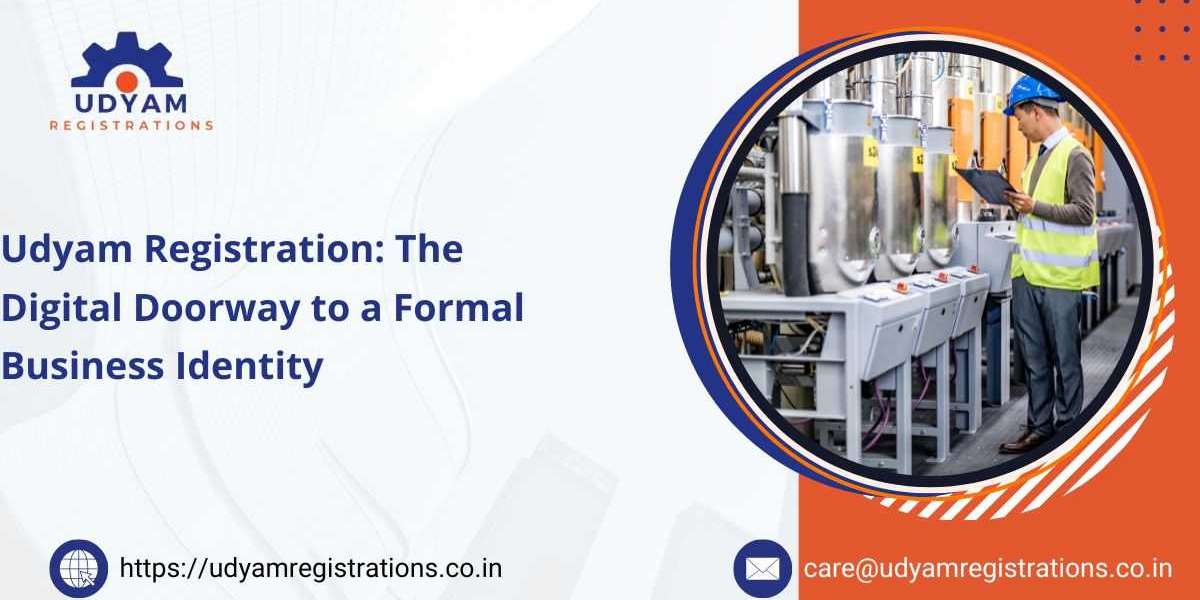In the evolving landscape of the Indian economy, Micro, Small, and Medium Enterprises (MSMEs) play a pivotal role. They contribute significantly to employment generation, exports, and innovation. However, despite their critical role, many of these enterprises remain informal and unregistered. To bring these businesses into the formal economy, the Government of India introduced Udyam Registration, a digital initiative aimed at simplifying the process of MSME registration. This article explores how Udyam Registration Online has become a cornerstone in the movement toward business formalization.
The Birth of Udyam Registration
In July 2020, the Ministry of Micro, Small, and Medium Enterprises launched Udyam Registration, replacing the older system that included EM-I/II and Udyog Aadhaar. The new system aimed to make MSME registration paperless, streamlined, and linked with government databases such as Aadhaar, PAN, and GST.
Why Udyam Registration Online Is Essential for Formalization
1. Legitimacy and Recognition
When a business registers under Udyam, it receives a unique Udyam Registration Number (URN) and a digital certificate. This formal recognition:
- Establishes the business as an MSME
- Enhances its credibility with banks, customers, and vendors
- Acts as proof of business existence for contracts and partnerships
Being a recognized entity helps build trust and opens up new opportunities for collaboration.
2. Easy Access to Financial Services
Unregistered businesses often struggle with access to credit due to a lack of documentation or formal business proof. With Udyam Registration:
- Banks can assess the registered business's legitimacy
- Enterprises can avail of collateral-free loans under schemes like CGTMSE
- Interest subsidies and government-backed loan products become available
This is particularly beneficial for first-time entrepreneurs and small manufacturers who need working capital.
3. Integration with Other Government Platforms
One of the strengths of the Udyam Registration system is its integration with platforms like GST, PAN, and GeM. This interoperability:
- Simplifies compliance processes
- Reduces redundancy and documentation errors
- Facilitates participation in government tenders via the GeM (Government e-Marketplace) portal
Such integration ensures that businesses operate within a well-connected ecosystem, increasing operational efficiency.
4. Eligibility for Government Incentives and Schemes
Formal MSMEs are eligible for a variety of schemes, including:
- PMEGP (Prime Minister’s Employment Generation Programme)
- CLCSS (Credit Linked Capital Subsidy Scheme)
- Procurement preference policies
- Reimbursement for ISO certification, barcoding, etc.
These incentives are not available to informal businesses. Udyam Registration ensures businesses can unlock the full range of MSME benefits.
5. Simplified Compliance and Regulatory Filing
Registered businesses often benefit from eased compliance measures, such as:
- Relaxation in certain labor law inspections
- Priority resolution under dispute redressal schemes
- Easier tax assessments and subsidies
Moreover, filing returns and taxes becomes more manageable once the business is part of a formal regulatory framework.
6. Building a Credit History
With Udyam Registration tied to PAN and GST data, businesses build a trackable credit footprint. This helps in:
- Getting better loan terms
- Enhancing the business’s financial profile
- Becoming eligible for fintech-based credit services
A solid credit history strengthens the long-term sustainability of the business.
7. Digital Empowerment
Udyam Registration is a flagship initiative under Digital India, helping entrepreneurs embrace digitization. It encourages businesses to:
- Use e-invoicing
- Maintain digital records
- Adopt cloud accounting systems
- Register for digital signatures
These steps not only streamline business operations but also prepare MSMEs for participation in the global digital economy.
The Udyam Registration Process: A Quick Overview
To register under Udyam, a business must follow these steps:
- Visit the Udyam Portal: Open the official Udyam Registration portal on your browser.
- Fill in Business Details: Enter important details like your business name, type, address, and bank account information. Ensure accuracy in the data.
- Review and Submit the Form: Review the information to confirm it's correct. After reviewing, apply.
- Pay the Registration Fee: Select your payment method and complete the payment for registration.
- Receive OTP on Mobile: An OTP will be sent to the mobile number linked with your Aadhaar card.
- Enter OTP: Input the OTP sent to your phone to verify your identity.
- Complete Registration: Once your details are confirmed, your registration will be completed.
- Receive Your Udyam Certificate: Once verified, your Udyam Registration certificate will be generated and sent directly to your email.
Who Should Register Under Udyam?
Any business falling under the MSME criteria should register. This includes:
- Manufacturers and service providers
- Sole proprietors and freelancers
- Traders and home-based businesses
- Small IT firms, consultants, and artisans
- Food processing units, tailors, and weavers
Whether you're a solo entrepreneur or a growing company with 100 employees, formalization via Udyam is crucial.
The Challenges in Business Formalization
While Udyam Registration has simplified formalization, challenges still exist:
- Awareness Gap: Many small businesses are unaware of Udyam or the benefits of formalization.
- Digital Divide: Rural and semi-urban entrepreneurs may lack internet access or digital literacy.
- Fear of Tax Compliance: Some businesses fear that formalization will expose them to burdensome tax scrutiny.
- Document Issues: Proprietors may lack PAN or Aadhaar linkage, slowing down registration.
The government, NGOs, and financial institutions need to play a proactive role in educating and supporting entrepreneurs.
Note: Now easily Print Udyam Certificate through udyam portal
Conclusion
Udyam Registration Online is much more than a bureaucratic formality—it is a foundational step toward building a modern, transparent, and inclusive MSME sector. It represents a shift from informal to formal operations, offering legal protection, financial access, and business credibility to millions of Indian entrepreneurs.
In a country where over 60 million MSMEs form the backbone of the economy, bringing them into the formal fold via initiatives like Udyam is essential for long-term growth. If you're an entrepreneur or small business owner, taking this digital step can transform your venture from a local idea to a recognized and scalable enterprise.











